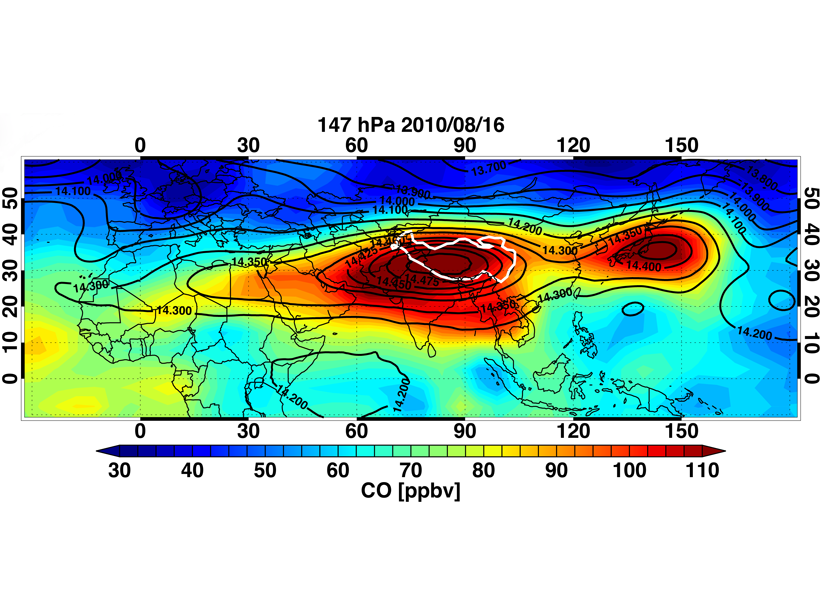Source: Journal of Geophysical Research: Atmospheres
Modern studies on the ancient subject of the Asian Summer Monsoon need fresh ideas with creative and advanced approaches to make a fundamental breakthrough. Understanding the monsoon heavily depends on how interactions of its many components can be clearly dissected.
Honomichl and Pan [2020] applied chemical data and chemical transport analysis to shed light on how the Asian Summer Monsoon relates the Tibetan Plateau to the remote western Pacific and induces exchanges between the troposphere and stratosphere. More than half of the air parcels cross the tropopause into the lower stratosphere within 30 days after reach the western Pacific. This is a welcome advancement from the traditional monsoon studies that rely solely on conventional statistics (correlation, composite) of physical variables.
Citation: Honomichl, S. B., & Pan, L. L. [2020]. Transport from the Asian summer monsoon anticyclone over the western Pacific. Journal of Geophysical Research: Atmospheres, 125, e2019JD032094. https://doi.org/10.1029/2019JD032094
—Chidong Zhang, Editor, JGR: Atmospheres
Text © 2020. The authors. CC BY-NC-ND 3.0
Except where otherwise noted, images are subject to copyright. Any reuse without express permission from the copyright owner is prohibited.

